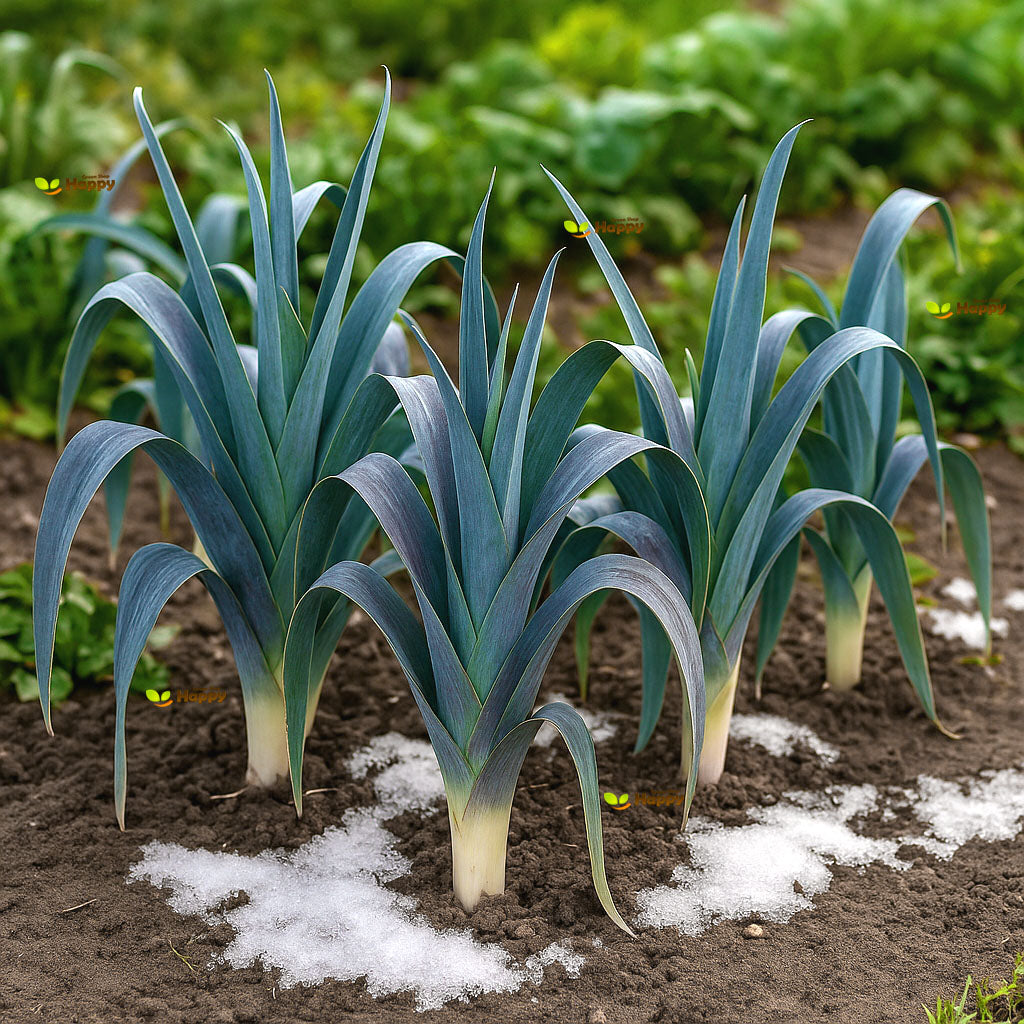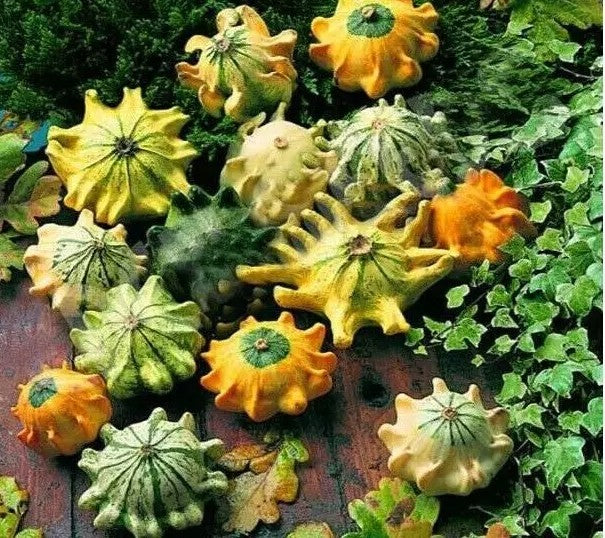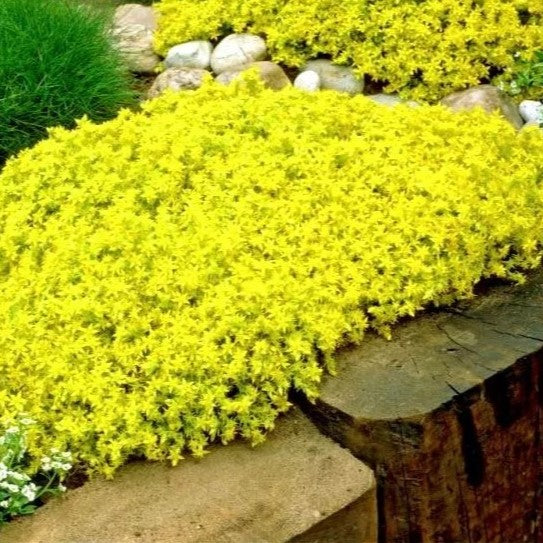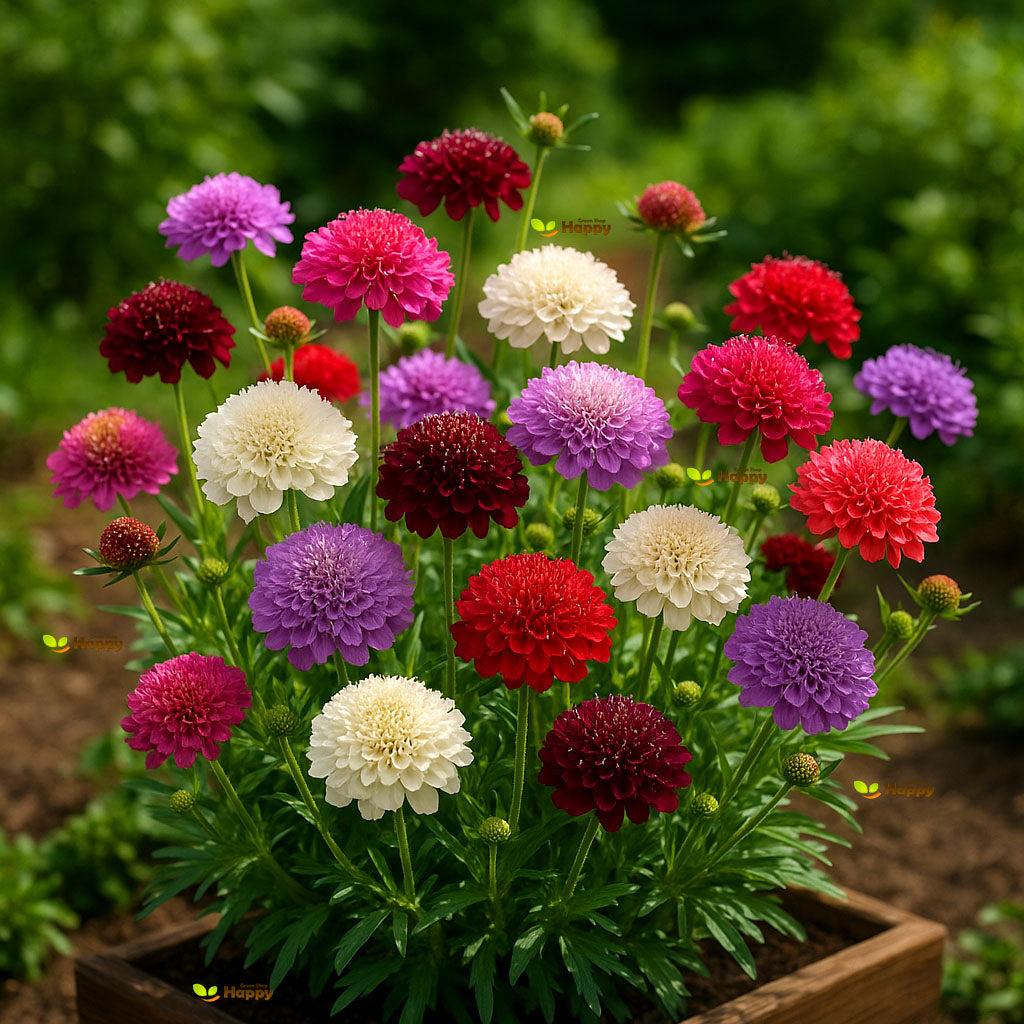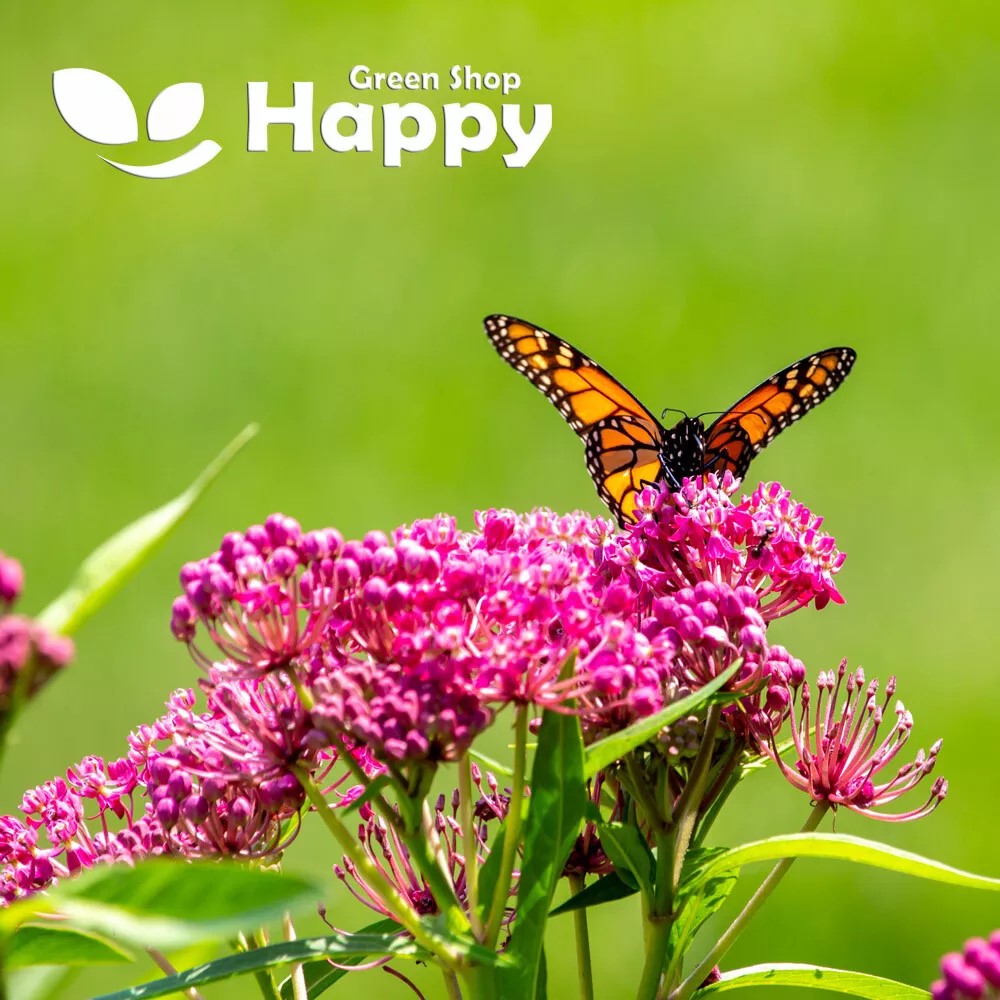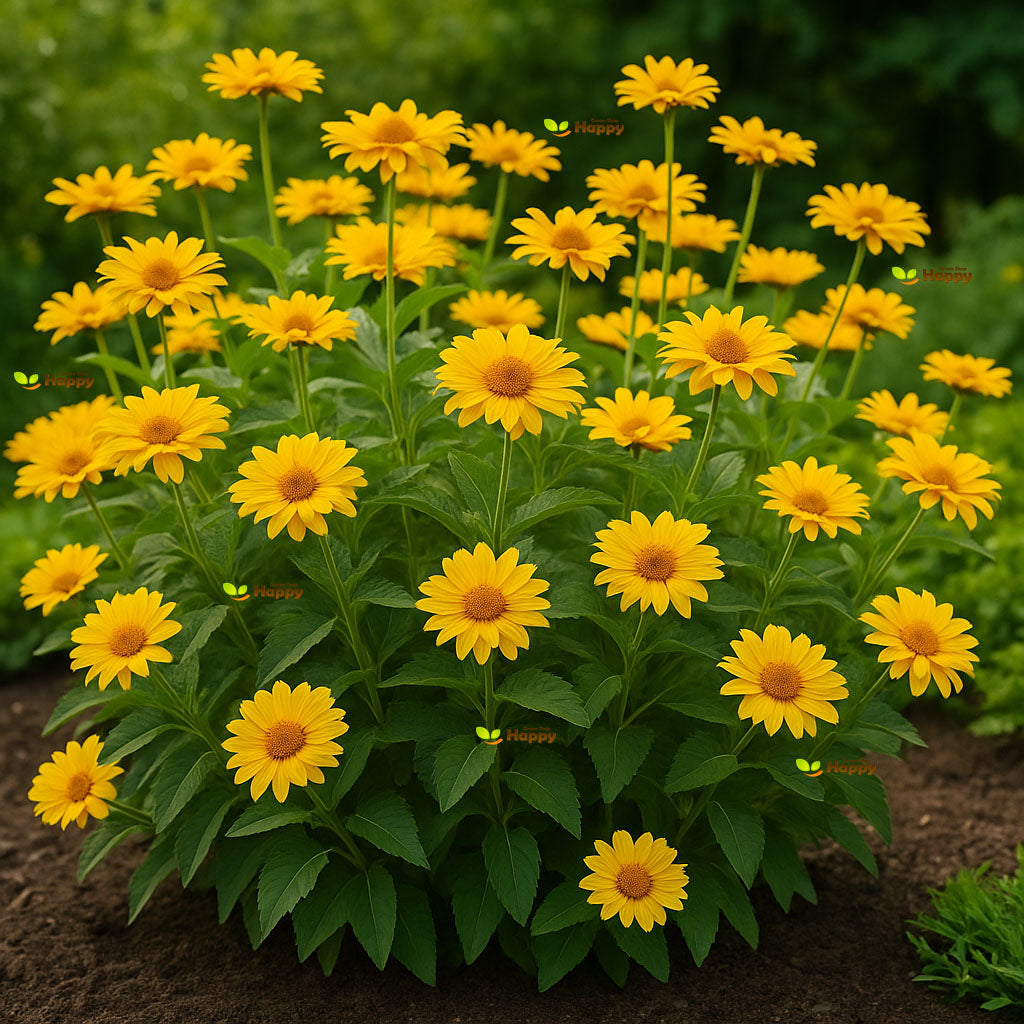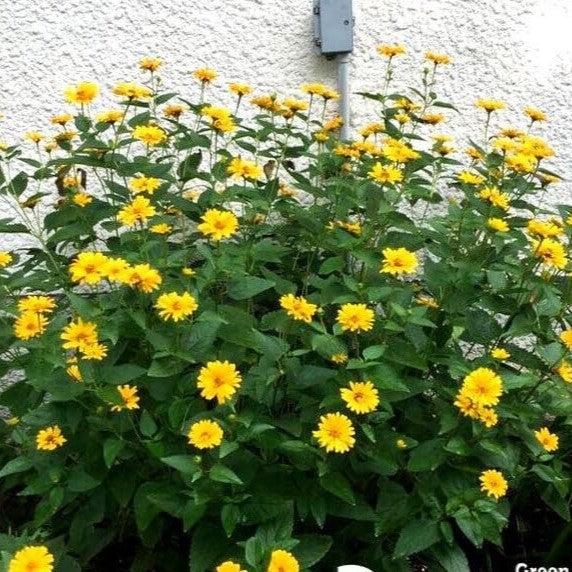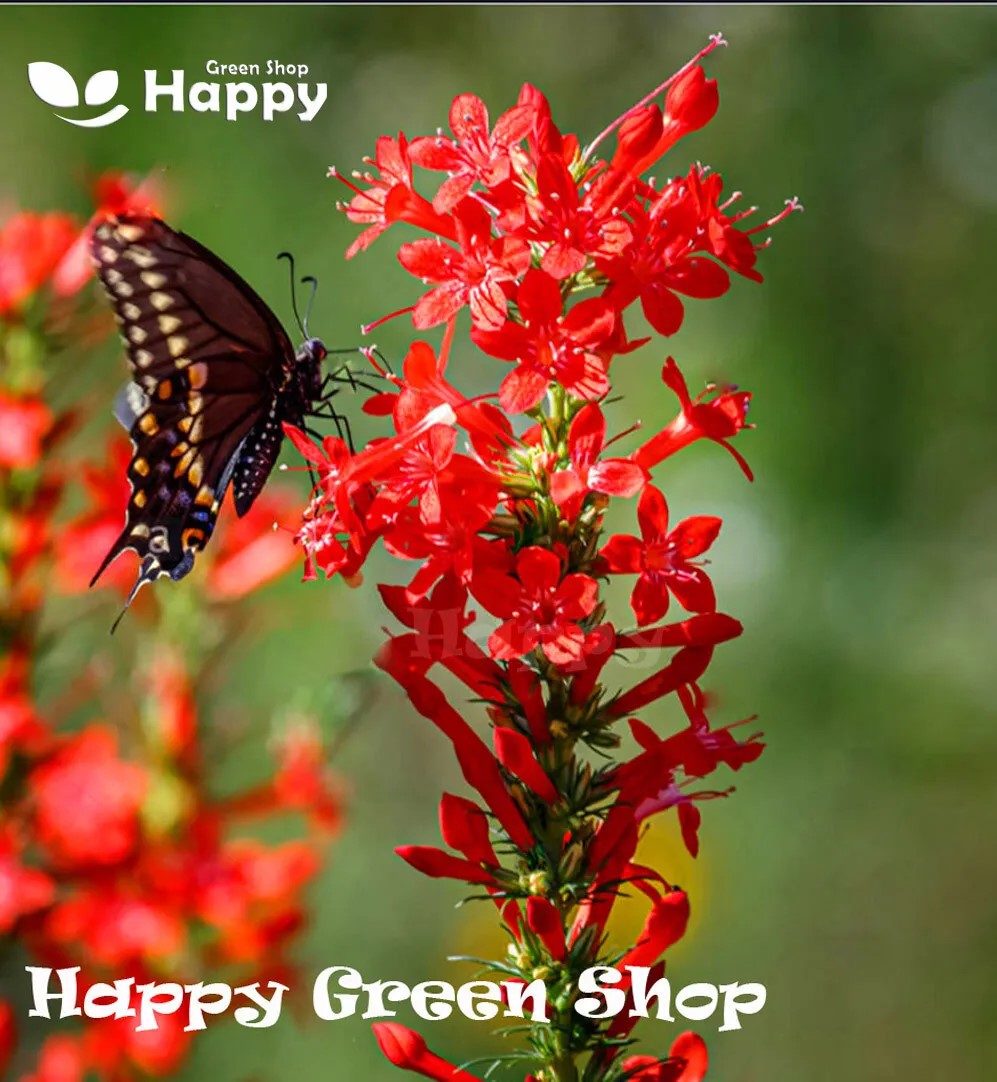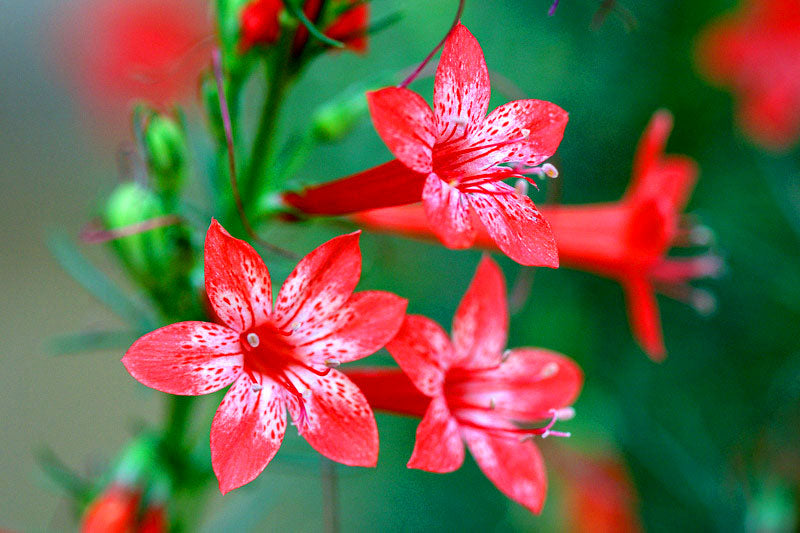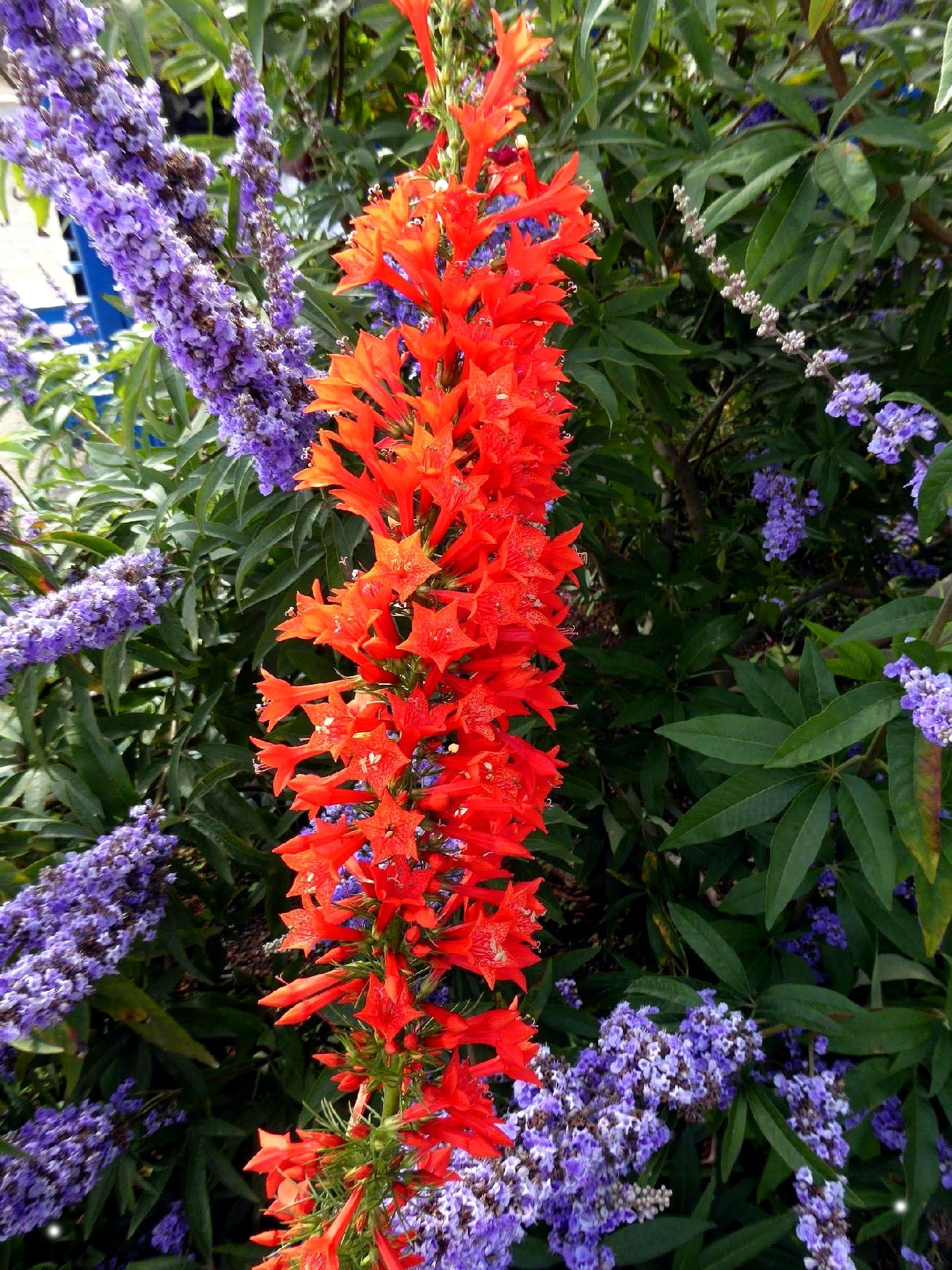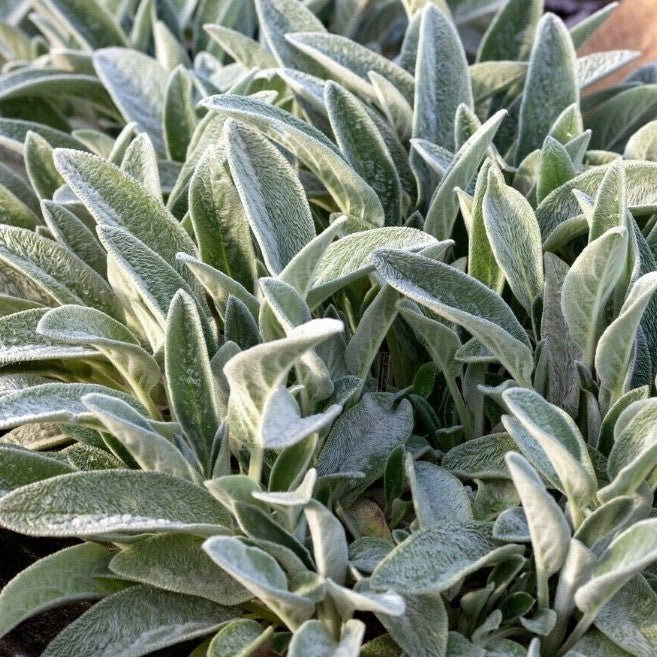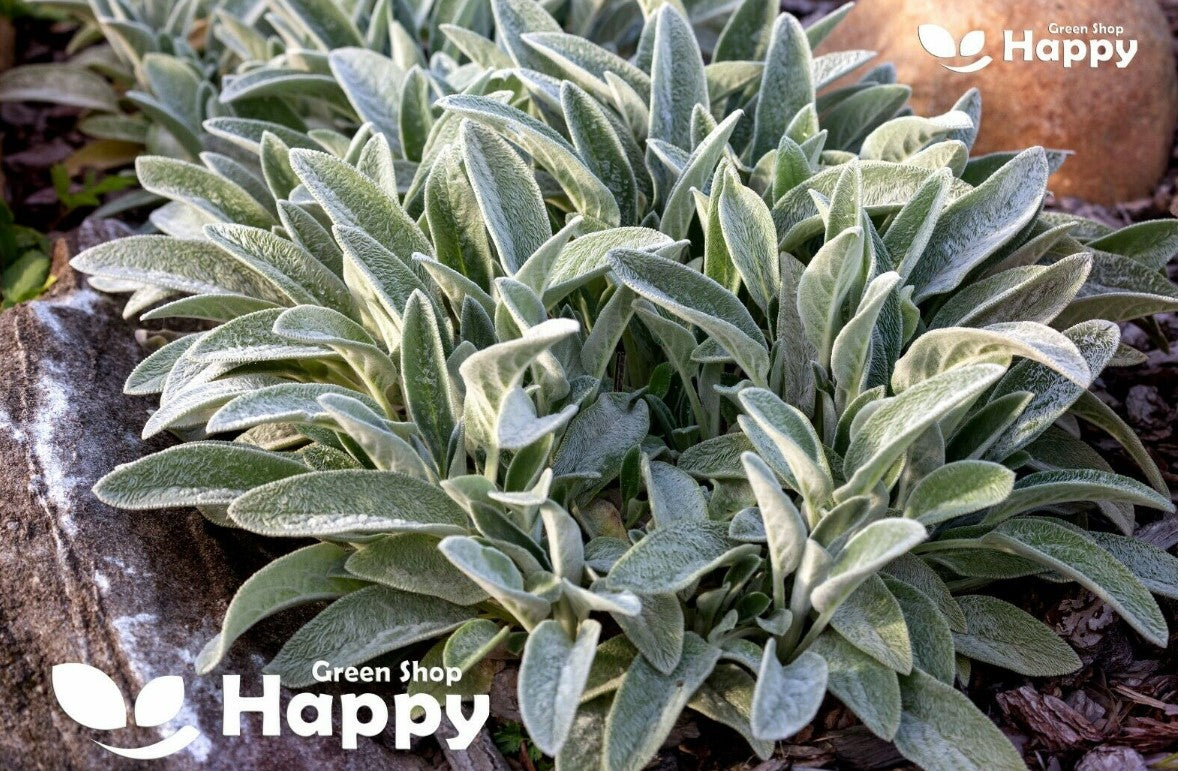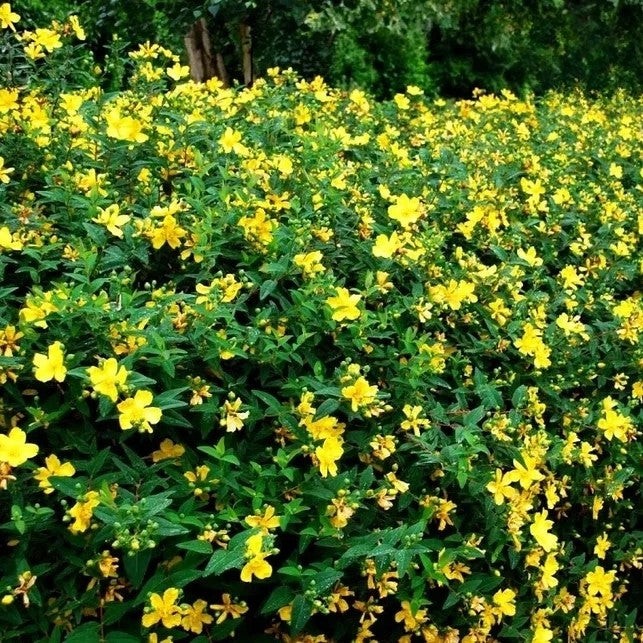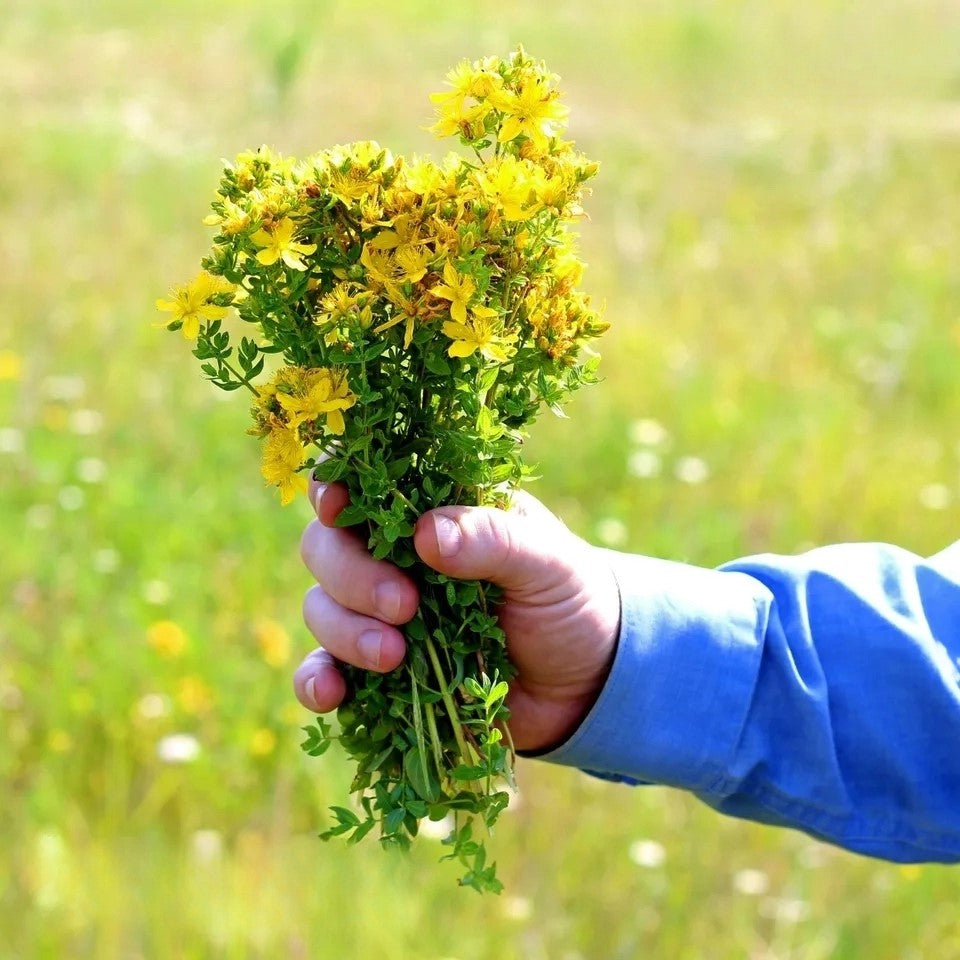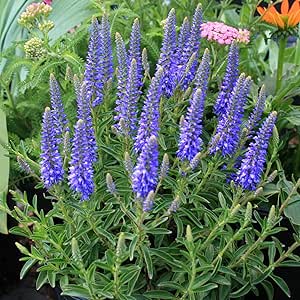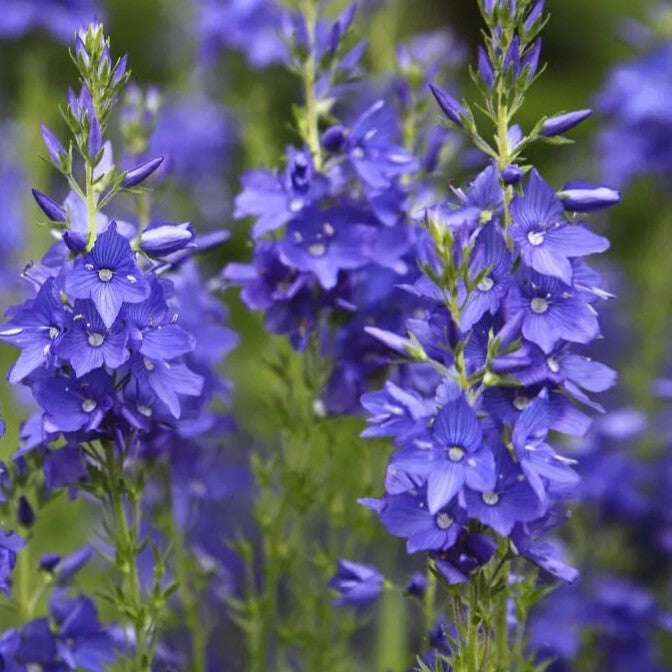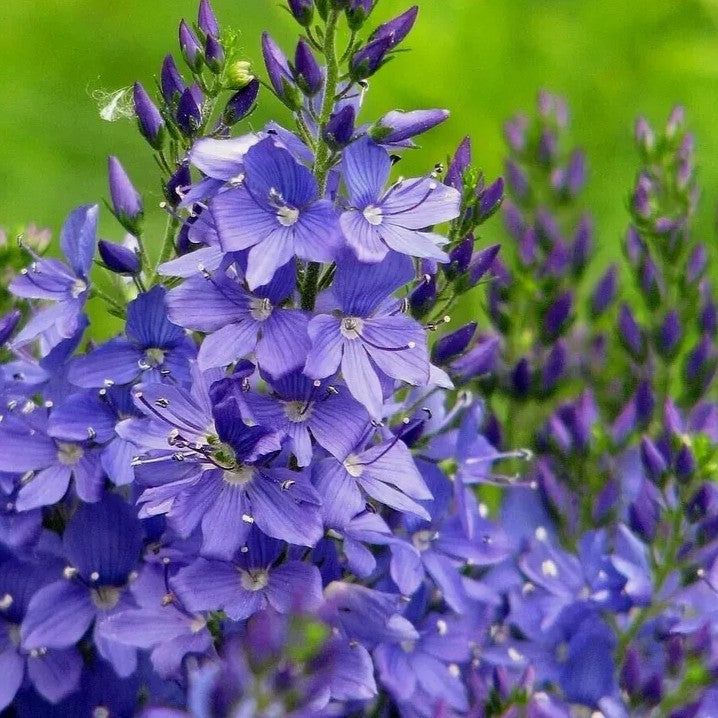Sort by:
224 products
224 products
Sweet Scabious Dwarf Double Mix – Seeds
(Scabiosa atropurpurea)
Sweet Scabious Dwarf Double Mix produces compact, bushy plants adorned with fully double, colourful blooms in shades of pink, lavender, and cream. Long-flowering and easy to grow, these dwarf scabious plants are perfect for borders, rockeries, and container displays. They attract butterflies and bees, making them a pollinator-friendly garden choice.
Why Grow Sweet Scabious Dwarf Double Mix?
-
Fully double, colourful flowers in pink, lavender, and cream
-
Compact and long-flowering
-
Attracts pollinators like bees and butterflies
-
Ideal for borders, rockeries, and containers
Key Features
-
Type: Annual / short-lived perennial
-
Height: 25–35 cm
-
Flowers: Summer to early autumn
-
Position: Full sun
-
Soil: Well-drained, moderately fertile
Ideal For
-
Cottage and mixed borders
-
Rockeries and containers
-
Pollinator-friendly gardens
-
Low-maintenance ornamental planting
Sowing & Growing
-
Sow indoors: February–April in seed trays
-
Sow outdoors: April–May directly in prepared soil
-
Germination: 10–20 days at 18–20°C
-
Thin seedlings to 20–25 cm apart
-
Care: Water moderately; deadhead to prolong flowering
Swamp Milkweed ‘Carmine’ Seeds (Asclepias tuberosa)
Swamp Milkweed ‘Carmine’ is a striking perennial featuring clusters of deep carmine-orange flowers from mid-summer to early autumn. Its vibrant blooms attract butterflies, bees, and other pollinators, making it an essential plant for wildlife gardens. Hardy, drought-tolerant, and low-maintenance, it thrives in sunny borders, meadows, and naturalized areas.
What Makes It Special
-
Eye-catching carmine-orange flower clusters
-
Attracts butterflies, bees, and pollinators
-
Drought-tolerant and easy to grow
Key Features
-
Botanical name: Asclepias tuberosa
-
Hardy perennial
-
Height: 60–90 cm
-
Bloom time: Mid-summer to early autumn
Ideal For
-
Pollinator and wildlife gardens
-
Sunny borders, meadows, and naturalized plantings
-
Cottage gardens and sunny rockeries
Sowing
-
Sow indoors Feb–Apr or outdoors Apr–Jun
-
Lightly cover seeds with soil
-
Germination: 14–28 days at 18–22°C
-
Space seedlings 30–40 cm apart
-
Flowers from the second year onward

Superb Pink Dianthus Superbus - 200 seeds (Dianthus superbus) Perennial Fragrant Flowers
£1.15
Unit price perSuperb Pink Dianthus Superbus - 200 seeds (Dianthus superbus) Perennial Fragrant Flowers
£1.15
Unit price perSuperb Pink – Seeds
(Dianthus superbus) – Perennial, Fragrant Flowers
The Superb Pink (Dianthus superbus) is a charming, hardy perennial known for its deeply fringed, feathery petals and sweet fragrance. Its delicate pink blooms appear in summer and are highly attractive to bees, butterflies, and other pollinators. A traditional cottage garden favorite, this variety brings romantic color and scent to borders, rock gardens, and wildflower-style plantings.
Key Features
-
Type: Perennial, fragrant flower
-
Height: 40–60 cm
-
Spread: 25–30 cm
-
Blooming period: June–August
-
Position: Full sun or partial shade
-
Soil: Well-drained, moderately fertile
Ideal For
-
Cottage and wild gardens
-
Pollinator-friendly planting
-
Rock gardens and meadow borders
-
Cut flower use thanks to its fragrance
Sowing & Growing
-
Sow indoors: February–April (in trays or pots at 18–20°C)
-
Sow outdoors: May–June (direct in prepared soil)
-
Sowing depth: Lightly cover with soil (fine seeds need minimal covering)
-
Spacing: 25–30 cm apart
-
Care: Hardy and low-maintenance; deadhead to prolong flowering
Summer Sun – Seeds (Heliopsis scabra)
Summer Sun (Heliopsis scabra) is a hardy perennial known for its bright, golden-yellow, daisy-like flowers that bloom from mid-summer to early autumn. With tall, upright stems and lush green foliage, this variety adds long-lasting color and height to borders, cottage gardens, and mixed perennial beds. Easy to grow and low-maintenance, it attracts pollinators and provides a cheerful, sunny display all summer long.
Why Grow "Summer Sun"
-
Vibrant golden-yellow daisy-like blooms
-
Long flowering season from mid-summer to early autumn
-
Hardy, low-maintenance perennial
-
Attracts bees, butterflies, and other pollinators
Key Features
-
Type: Perennial (Heliopsis scabra)
-
Height: 60–90 cm
-
Flowering: Mid-summer to early autumn
-
Position: Full sun
-
Uses: Borders, cottage gardens, mixed perennial beds, pollinator-friendly gardens
Ideal For
-
Adding bright color and height to summer borders
-
Cottage and perennial garden beds
-
Pollinator-friendly garden planting
-
Long-lasting summer displays
Sowing & Growing
-
Sow indoors: February–April in trays or pots
-
Sow outdoors: April–May directly in soil
-
Germination: 10–20 days at 18–22°C
-
Thin seedlings 30–40 cm apart
-
Prefers well-drained soil in full sun
-
Water moderately until established
Standing Cypress – 150 Seeds (Ipomopsis rubra)
Add a dramatic vertical accent to your garden with Standing Cypress (Ipomopsis rubra). This hardy biennial or short-lived perennial produces tall, slender spikes covered with brilliant scarlet-red, trumpet-shaped flowers. Loved by hummingbirds, butterflies, and bees, it creates a striking display in wildflower meadows, cottage gardens, and naturalized plantings. Its fern-like foliage provides texture, while the flowers bloom in succession for weeks of color.
Why Grow Standing Cypress?
-
Vibrant scarlet-red tubular flowers
-
Attracts hummingbirds, butterflies, and pollinators
-
Tall, airy spires up to 90–150 cm
-
Perfect for naturalistic and meadow plantings
-
Heat and drought tolerant once established
Key Features
-
Type: Biennial or short-lived perennial wildflower
-
Height: 90–150 cm
-
Flowering: Summer (July–September)
-
Position: Full sun; well-drained soil
-
Uses: Pollinator gardens, borders, meadows, cut flowers
Ideal For
-
Wildflower meadows & prairie gardens
-
Pollinator-friendly planting
-
Adding height to borders and backdrops
-
Low-maintenance, drought-tolerant landscapes
Sowing & Growing
-
Sow indoors: March–April in trays or pots, cover lightly with soil
-
Sow outdoors: Directly in April–June where they are to grow
-
Germination: 14–21 days at 18–22°C
-
Thin/plant spacing: 25–30 cm apart
-
Flowers the second year, but may self-seed for naturalized displays
Stachys lanata ‘Lamb’s Ears’ Pink Seeds (Stachys byzantina ‘Lanata’)
A soft-textured perennial, Stachys lanata ‘Lamb’s Ears’ Pink produces fuzzy, silvery-green foliage with spikes of delicate pink flowers in summer. Hardy and low-maintenance, it’s perfect for borders, rock gardens, and container plantings, providing texture, color, and pollinator-friendly blooms.
What Makes It Special
-
Silky, fuzzy foliage with soft pink flower spikes
-
Hardy and low-maintenance with long-lasting visual appeal
-
Attracts bees and butterflies, enhancing pollinator gardens
Key Features
-
Botanical name: Stachys byzantina ‘Lanata’
-
Hardy perennial
-
Height: 20–30 cm (8–12 in), flower spikes up to 50 cm (20 in)
-
Bloom time: Summer
Ideal For
-
Borders, rock gardens, and container plantings
-
Textured garden displays and soft foliage accents
-
Pollinator-friendly garden spaces
Sowing
-
Sow indoors Feb–Apr or outdoors Mar–May
-
Cover lightly with soil and keep moist
-
Germination: 14–21 days at 15–20°C
-
Thin seedlings 20–25 cm apart
-
Flowers in the first or second season after sowing
St. John’s Wort – Seeds (Hypericum perforatum)
St. John’s Wort (Hypericum perforatum) is a hardy perennial herb known for its bright yellow star-shaped flowers and long history of use in traditional herbal medicine. It grows easily in gardens, meadows, or wildflower plantings, attracting pollinators while adding natural beauty.
Often valued for its ornamental and herbal qualities, St. John’s Wort thrives in poor soils and sunny locations, making it a low-maintenance addition to cottage gardens and naturalized landscapes.
How to Grow
-
Sow indoors: February – April
-
Sow outdoors: April – June, or autumn for natural stratification
-
Depth: Surface sow – seeds need light to germinate
-
Spacing: 30 cm between plants
-
Position: Full sun to partial shade
-
Soil: Well-drained, moderately fertile, sandy or rocky soils
Key Features
-
Perennial herb with golden yellow, star-shaped blooms
-
Attracts bees and pollinators
-
Grows well in poor, dry soils – low maintenance
-
Suitable for borders, meadows, and herb gardens
-
Traditional herb, long valued in folklore and medicine
Flowering & Harvest
-
Flowering time: June – September
-
Blooms can be collected at peak flowering if used for herbal purposes.
Spike Speedwell Seeds (Veronica spicata)
Spike Speedwell is a hardy perennial producing striking vertical spikes of violet-blue flowers over dense green foliage. Its long flowering period from early summer to autumn makes it perfect for borders, cottage gardens, and pollinator-friendly plantings. Low-maintenance and attractive to bees and butterflies, it also works well in mixed perennial beds.
What Makes It Special
-
Tall, elegant spikes of violet-blue flowers
-
Long-flowering, hardy, and low-maintenance
-
Attracts bees, butterflies, and pollinators
Key Features
-
Botanical name: Veronica spicata
-
Hardy perennial
-
Height: 40–60 cm (16–24 in)
-
Bloom time: Early summer to autumn
Ideal For
-
Cottage gardens and perennial borders
-
Pollinator-friendly gardens
-
Mixed beds and wildlife plantings
Sowing
-
Sow indoors Feb–Apr or outdoors Apr–Jun
-
Cover seeds lightly with soil; keep moist
-
Germination: 14–28 days at 18–22°C
-
Thin seedlings 30 cm apart
-
Flowers the second year after sowing
Speedwell Royal Blue Seeds (Veronica teucrium)
Speedwell Royal Blue is a hardy perennial featuring striking vertical spikes of deep royal blue flowers above glossy green foliage. Its long flowering period makes it ideal for borders, cottage gardens, and pollinator-friendly plantings. Low-maintenance and elegant, it also works beautifully in mixed perennial beds.
What Makes It Special
-
Bold vertical spikes of royal blue flowers
-
Hardy and long-flowering perennial
-
Attracts bees, butterflies, and other pollinators
Key Features
-
Botanical name: Veronica teucrium
-
Hardy perennial
-
Height: 40–60 cm (16–24 in)
-
Bloom time: Early summer to late summer
Ideal For
-
Cottage gardens and perennial borders
-
Pollinator-friendly gardens
-
Mixed beds and wildlife plantings
Sowing
-
Sow indoors Feb–Apr or outdoors Apr–Jun
-
Cover seeds lightly with soil; keep moist
-
Germination: 14–28 days at 18–22°C
-
Thin seedlings 30 cm apart
-
Flowers the second year after sowing
Showing 27/224

